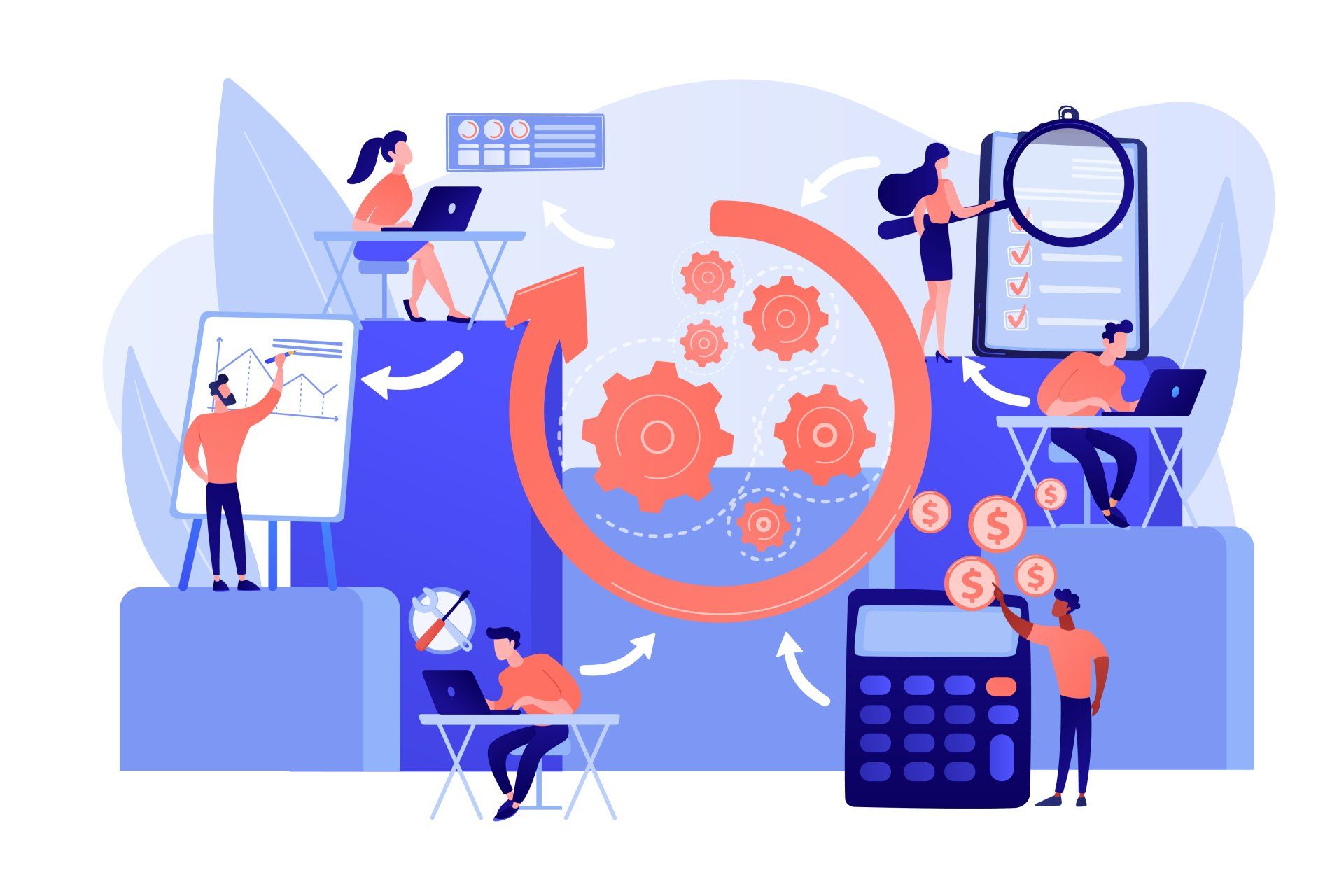Business Process Management (BPM) – The State of BPM Technology Today!

BPM is defined broadly as a framework for developing, deploying, monitoring, and optimizing various types of process automation applications, including processes that involve both systems and people. Furthermore, business process management (BPM) entails the study, identification, modification, and monitoring of business processes to ensure that organizations run smoothly and improve over time.
Business process management software (BPMS) is a technological solution that allows businesses to design, analyse, execute, monitor, optimise, and automate critical processes. It also serves as an automation tool for organizations, allowing them to cut costs, eliminate silos and bottlenecks, and extend legacy systems.
Many industry experts have stated that BPM is not a technology issue. This is incorrect. BPM is a major technological issue. However, to implement the technology, the strategic business drivers must be in place. BPM serves as a framework, a single platform on which business work can be performed. The focus has been on workflow, but monitoring and continuous process improvement are becoming increasingly important.
Key BPM characteristics include:
- Process application design and development environment.
- End-to-end transaction management.
- Support for multiple integration services.
- Support data aggregation and transformation.
- Support for content management functionality.
- Business Activity Management (BAM) including process monitory, analytics, and simulation components.
- An architecture that supports high performance, scalability, and embedded failover/reliability functionality.
- Providing template applications with pre-built components.
Basic processes are required by all businesses, and these include business rules, roles, reports, integration, components, client interfaces, and best practices. These processes can be used to improve the efficiency of any business. EDMS/workflow, application servers, rules engines, development platforms, and integration servers are all supported by BPM. The vendor landscape for these specialties is vast.
Many leading vendors are increasing the functionality of their products through increased integration and improved application functionality. The trends indicate that BPM will be increasingly used as an enterprise process management platform, with significant improvements in monitoring, analytics, and simulation. Portals focused on processes and content are being developed, and application server vendors will provide a unified platform for BPM, application development, and integration services.
To create a BPM strategy methodology for your company, seven steps need to be followed:
- Current state assessment.
- Enterprise requirements definition.
- Conceptual design, reference architecture.
- Deployment strategy.
- Candidate solution assessment.
- Selection process.
- Prototype and pilots.
To determine the current state of your business, you must first define your project's business and IT goals. Data must be gathered to define the requirements and document the current process and problems. Examine your data, documents, processes, tools, and users to accomplish this. To establish current and future IT standards and plans, use existing documentation, interviews, and surveys. Pay attention to all process management applications, such as ERP, CRM, document management, segmentation, targeting, and positioning (STP), and workflow. Senior management, as well as IT, line of business (LOB), and other affected parties from the top to the bottom, should be interviewed. This will be the definition of your enterprise requirements.
Following the completion of the enterprise requirements definitions, conceptual design and reference architecture are tackled. The goals of this project are to create a conceptual design that identifies the key components needed to meet the enterprise requirements and their relationship to the current system, which includes STP, manual workflow, a business rules engine, and BAM. The BPM reference architecture, as well as cases for high-priority BPM applications, must be developed. At this point, the organizational readiness to support the reference architecture must be assessed.
Recommendations for a forward strategy are:
- Gain both business and IT sponsorship.
- Identify the business-critical BPM application pilot.
- Identify high-priority requirement for current and anticipated BPM applications.
- Categorize requirements into key areas: STP and document lifecycle management, case management, customer services, ERP.
- Evaluate all existing workflow components/solutions.
- Optimize the tools and relationships you already have in place.
It is critical to select a critical business issue that is important to the company. It is difficult to gain support for a BPM project initiative if there are no concrete goals and objectives to be met. It is difficult to demonstrate to all process participants how BPM improvements will benefit them and the company. Everything becomes much more difficult without their assistance. As a result, an organizational readiness assessment is required.
Previously, legacy BPM solutions necessitated extensive IT and developer support. The software was developed from the ground up. Maintaining a legacy system is a difficult and costly task. These systems and the programming languages required to use them are typically outdated and obsolete, with the system itself complex and bloated, focused on more mediocre functionality rather than less functionality of higher quality, and with poor documentation to boot. Many organizations have chosen to implement modern cloud-based SaaS BPM platforms to address these issues.
BPMS has shifted its focus in recent years to customer experience. Most businesses are wondering, "How can we change our processes to enable better collaboration, support, and innovation to help create a better customer experience?" As a result, organizations are turning to BPM to help them with digital transformation. Organizations are looking for BPMS that uses technology to drive automation, collaboration, and customer engagement. Today's BPM solutions, like those seen in other software verticals, require little to no IT involvement to create, implement, automate, and optimize business processes.
"The business process management (BPM) market was valued at USD 3.38 billion in 2019 and is expected to reach USD 4.78 billion by 2025," according to Mordor Intelligence. The increasing integration of automation and the Internet of things (IoT) with BPM is contributing to market growth.
Organizations are demanding higher productivity, better risk management, and better cost control in today's uncertain economic climate. As a result of the increased demand, more BPM software vendors are focusing on the implementation of Robotic Process Automation (RPA). Organizations can improve their agility and flexibility by deploying new applications and processes more quickly with this technology stack in place.
The future of BPM looks promising as the technology powering RPA, bots, and adaptive automation continues to improve with machine learning. BPM software is rapidly increasing in functionality and promise, and it works well right now. That is why BPM is such a high priority for organizations focusing on improving efficiencies and leveraging existing systems.
Our clients rely on us to help them deliver a better customer experience, automate operations, and use technology to reduce costs. You should too.











